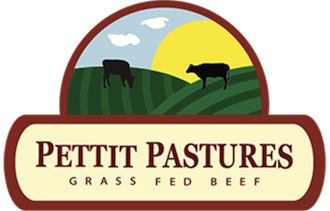January Farm Update
I hope everyone had a wonderful holiday season. I know we certainly did on the farm. With the holidays over, we are starting to head into the long stretch of winter where things start to slow down a bit. This time of year gives us time to catch up on things that need fixing, get ready for next grazing season, and take time to see what is happening in the farming community. While staying updated on what’s happening within the farming community, I came across a couple of recent changes that I think consumers should be aware of.
The first is that Congress recently repealed the Country of Origin Labeling Act (COOL Act). For those of you not familiar with the COOL Act, it made it mandatory to have labels on packaging stating what country or countries an animal was born, raised, and slaughtered in. They repealed this because of pressure put on by the World Trade Association despite overwhelming support by U.S. Consumers. What this means for consumers is that you will start to see more beef, especially Grass fed beef, being imported. Consumers will have a much harder time distinguishing between American beef and imported beef. Also, consumers have no way to verify that imported Grass fed beef is actually Grass fed.
The second item is about less consumer transparency as well. Earlier this month the USDA’s Agricultural Marketing Service rescinded the standards for the grassfed marketing claim. These were the minimal standards behind the grassfed label found on meat. What this means is FSIS will continue to approve the grassfed label claim, but producers will each define their own standards. Once again, the consumers lose the ability to make accurate informed decisions on their food choices.
It is hard to believe that a time when consumers are asking for more information about how their food is grown, raised, processed, and stored that we get these two new policies giving us the exact opposite.
Below is an excerpt from the American Grassfed Association’s website about how consumers can make informed decisions on their food despite these new rulings.
[/et_pb_text][et_pb_image url_new_window=”on” align=”center” src=”https://www.pettitpastures.com/wp-content/uploads/2019/01/january-farm-update.png” _builder_version=”3.19.3″ url=”http://www.americangrassfed.org”][/et_pb_image][et_pb_text _builder_version=”3.19.3″]
For those who want to buy real grassfed with a label they can trust:
• Buy from a farmer you know, and ask plenty of questions. Do you supplement with grain or grain by-products such as brewers and distillers grain or by-products from ethanol production? Where do you get your animals? Do you use antibiotics or hormones? Do you feed your animals in confinement?
• If you don’t have the luxury of knowing your producer personally, then look for the American Grassfed Approved logo. It’s the first and only standard developed by producers, range scientists, veterinarians, animal nutritionists, and other experts that guarantees the meat comes from animals fed a 100-percent forage diet, never confined to a feedlot, never fed antibiotics or hormones, and born and raised on American family farms. No other certification offers those assurances, and no other grassfed program uses true third-party audits to ensure compliance.
• Avoid buying inexpensive grocery store grassfed. Chances are good that it’s imported– although now that Congress has eliminated County of Origin Labeling, there’s no way to be certain—and the animals were probably confined and supplemented with some form of grain.
• Avoid buying meat with a grassfed percentage on the label. It’s either grassfed or it’s not. Studies have shown that even a small amount of grain in the animal’s diet affects the nutritional profile of the meat.
As most of you know, Pettit Pastures is a member of the American Grassfed Associations. For more information about them and their producer standards check out their website:
[/et_pb_text][/et_pb_column][/et_pb_row][/et_pb_section]
